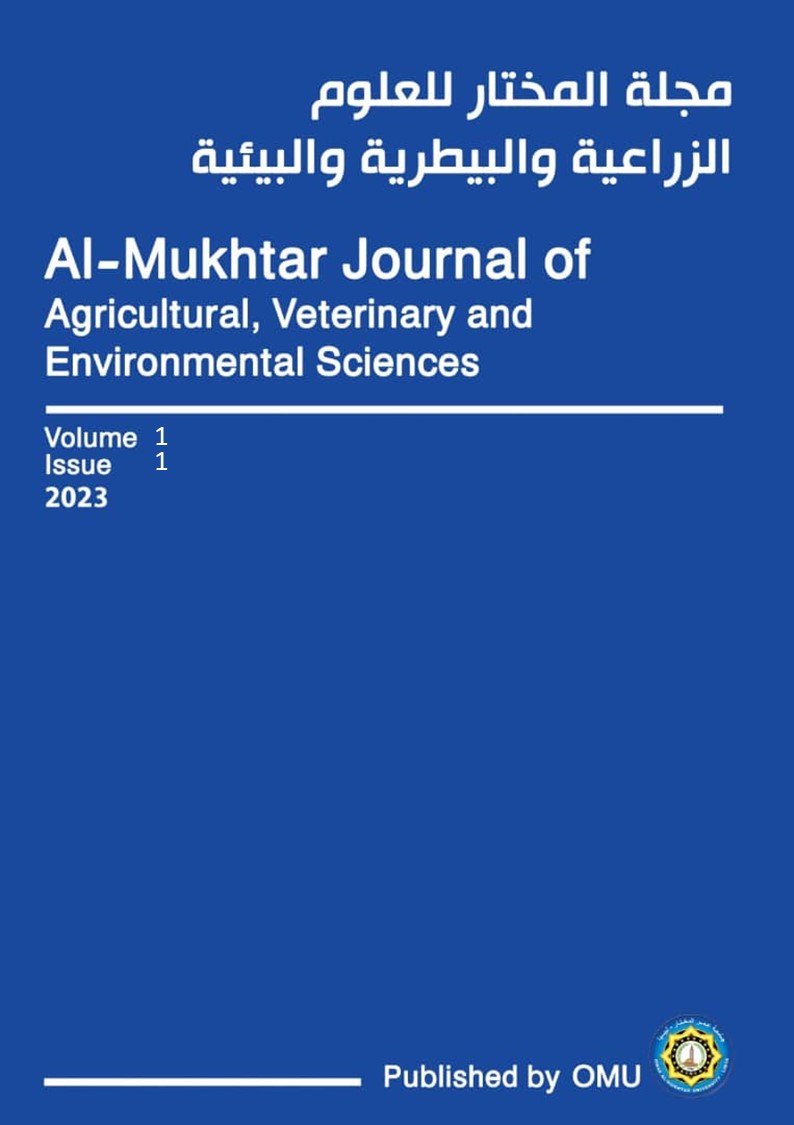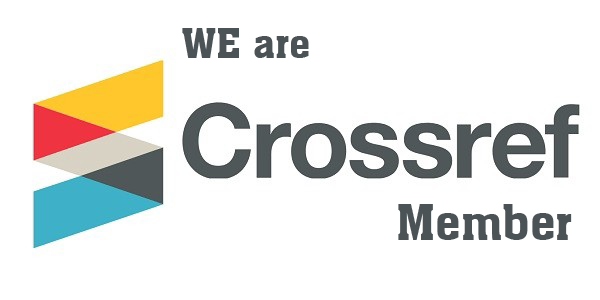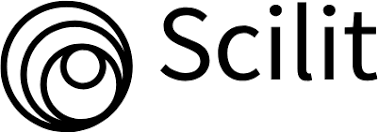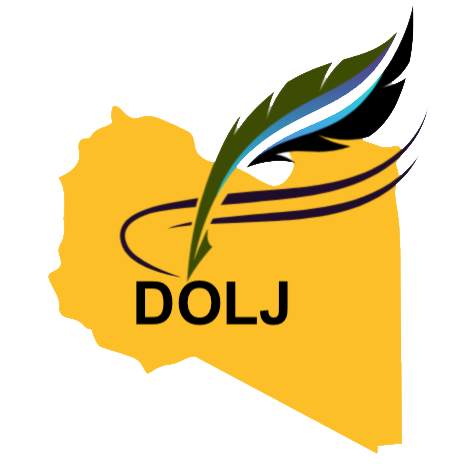The Effect of Joint Angle on Measurements of Equine Metacarpophalangeal Radiographs
DOI:
https://doi.org/10.54172/p93s4a34Keywords:
Equine, Metacarpophalangeal joint, Morphometry, Rotation, RadiographsAbstract
Radiology is an important, minimally invasive, diagnostic tool used to identify and treat pathological cases. Metacarpophalangeal joint (MCPJ) radiographic parameters have been developed to evaluate equine MCPJ conformation but the effect of MCPJ angle on these radiographic parameters has not been reported. This experiment was aimed to study the effect of MCPJ angle on 27 (12 angular and 15 ratio) MCPJ parameters and alsoto determine the acceptable range at which minimal changes occurred in those parameters. Six forelimbs from six different horses with no MCPJ abnormalities or visible pathology were collected. Each MCPJ was positioned vertically and digitally radiographed dorsopalmarly at seven different MCPJ angles within the normal range and with 5.5° intervals. MCPJ angles were achieved by applying different loads using a load cell. All parameters were measured on the 42 radiographs using EponaTech Metron software. Differences were estimated per 5.5° change in MCPJ angle for all parameters. The ratio parameters were generally less affected than the angular parameters. The amount of changes was small in the majority of the angular parameters and very small in all the ratio parameters. MCPJ angle ranged between 146° and 157° would be considered as the acceptable range for all these parameters.
References
Ahlqvist, J., Eliasson, S., & Welander, U. (1986). The effect of projection errors on cephalometric length measurements. European Journal of Orthodontics, 8(1), 141-148.
Ahlqvist, J., Eliasson, S., & Welander, U. ((1983). The cephalometric projection. Part II. Principles of image distortion in cephalography. Dentomaxillofac Radiol, 12(1), 101-108.
Alrtib, A. M., Oheida, A. H., Abushhiwa, M. H., & Davies, H. M. S. (2015). Metacarpophalangeal joint angle measurement in equine forelimbs. Journal of Veterinary Advances, 5(2), 831-840.
Alrtib, A. M., Oheida, A. H., Abushhiwa, M. H., & Davies, H. M. S. (2019). Fetlock Parameters Development on Dorsopalmar Radiographs in the Equine Forelimb. Journal of Advanced Veterinary Research, 9(2), 49-55.
Alrtib, A. M., Oheida, A. H., Abushhiwa, M. H., & Davies, H. M. S. (2023). Effect of limb rotation on measurements of equine metacarpophalangeal radiographs. Mansoura Veterinary Medical Journal, 24(1), 1-9.
Bushe, T., Turner, T., Poulos, P., & Harwell, N. (1988). The effect of hoof angle on coffin, pastern and fetlock joint angles. In: Proc AAEP (Vol. 33).
Chen, Y. J., Chen, S. K., Chang, H. F., & Chen, K. C. (2000). Comparison of landmark identifica-tion in traditional versus computer-aided digital cephalometry. Angle Orthod, 70(1), 387-392.
Chen, Y. J., Chen, S. K., Yao, J. C., & Chang, H. F. (2004). The effects of differences in landmark identification on the cephalometric measurements in traditional versus digitized cephalome-try. Angle Orthod, 74(1), 155-161.
Curry, T. S., Dowdey, J. E., Murry, R. C., & Christensen, E. E. (1990). Christensen's physics of di-agnostic radiology. Lippincott Williams & Wilkins.
Denoix, J. M., Jacot, S., Bousseau, B., & Perrot, P. (1996). Ultrasonographic anatomy of the dorsal and abaxial aspects of the equine fetlock. Equine Veterinary Journal, 28(1), 54-62.
Dyce, K. M., Sack, W. O., & Wensing, C. J. G. (2002). Textbook of veterinary anatomy.4thed edn. Philadelphia: Saunders.
Gravely, J. F., & Benzies, P. M. (1974). The clinical significance of tracing error in cephalometry. British Journal of Orthodontics, 1(3)):95-101.
Gregston, M. D., Kula, T., Hardman, P., Glaros, A., & Kula, K. (2004). A comparison of conven-tional and digital radiographic methods and cephalometric analysis software: I. hard tissue. In: Semin Orthod, Vol. 10. Elsevier.
Han, C. M., Hurd, C. D., & Kurklis, L. (1994). Practical guide to diagnostic imaging: radiography and ultrasonography. American Veterinary Publications.
Holmstrom, M., Magnusson, L. E., & Philipsson, J. (1990). Variation in conformation of Swedish warmblood horses and conformational characteristics of Èlite sport horses. European Vete-rinary journal, 1(22), 186-193.
Kumar, V., Ludlow, J., Soares Cevidanes, L. H., & Mol, A. (2008). In vivo comparison of conven-tional and cone beam CT synthesized cephalograms. Angle Orthod. 78(1), 873-879.
Lavin, L. M. (2007). Radiography in veterinary technology. Lisa, M. Lavin. 4th ed. edn. St. Louis, Mo., Saunders: Elsevier.
Lonner, J. H., Laird, M. T., & Stuchin, S. A. (1996). Effect of rotation and knee flexion on radio-graphic alignment in total knee arthroplasties. Clin Orthop Relat Res, 331(1), 102-106.
Major, P. W., Johnson, D. E., Hesse, K. L., & Glover, K. E. (1994). Landmark identification error in posterior anterior cephalometrics. Angle Orthod, 64(1), 447-454.
Major, P. W., Johnson, D. E., Hesse, K. L., & Glover, K. E. (1996). Effect of head orientation on posterior anterior cephalometric landmark identification. Angle Orthod, 66(1), 51-60.
Malkoc, S., Sari, Z., Usumez, S., & Koyuturk, A. E. (2005). The effect of head rotation on cepha-lometric radiographs. European journal of Orthod,, 27(1), 315-321.
Meijer, M. F., Velleman, T., Boerboom, A. L., Bulstra, S. K., Otten, E., Stevens, M. , & I.H, R. (2016). The validity of a new low-dose stereoradiography system to perform 2D and 3D knee prosthetic alignment measurements. PLoS One, 11(1), :e0146187.
Nagasaka, S., Fujimura, T. & Segoshi, K. (2003). . (2003). Development of a non-radiographic ce-phalometric system. European Journal of Orthodontics, 25(1), 77-85.
Oheida, A. H., Anderson, G. A., Alrtib, A. M., Abushhiwa, M. H., Philip, C. J., & Davies, H. M. S. (2016). Carpal parameters on dorsopalmar radiographs of the equine carpus. Journal of Ve-terinary Advanced, 6(6), 1258-1268.
Oheida, A. H., Anderson, G. A., Alrtib, A. M., Abushhiwa, M. H., Philip, C. J., & Davies, H. M. S. (2017). Effect of limb rotation on radiographic measurements of carpal parameters in the equine carpus. Journal of Veterinary Advanced, 7(3), 1392-1402.
Pasquini, C., & Spurgeon, T. (1989). Anatomy of domestic animals, systemic and regional approach. 5th ed. Sudz Pub.
Rooney, J. R. (1984). The angulation of the forefoot and pastern of the horse. Journal of Equine Ve-terinary Science, 4(1), 138-143.
Sisson, & Grossman. (1975). The Anatomy of the Domestic Animals, 5th ed. Philadelphia, W. B. Saunders Company.
Sun, X., Yang, B., Xiao, S., Yan, Y., Liu, Z., Yuan, L., . . . Fan, Y. (2021). Effect of limb rotation on radiographic alignment measurement in mal-aligned knees. . BioMedical Engineering OnLine, 20(1), 119.
Turner, P. J., & Weerakone, S. (2001). An evaluation of the reproducibility of landmark identifica-tion using scanned cephalometric images. Journal of Orthodontics, 28(1), 221-229.
Walter, L. J., & Davies, H. M. (2001). Analysis of a radiographic technique for measurement of equine metacarpal bone shape. Equine Veterinary Journal Supplement, 33(1), 141-144.
Weller, R., Pfau, T., May, S. A., & Wilson, A. M. (2006). Variation in conformation in a cohort of National Hunt racehorses. European Veterinary journal, 38(1), 616-621.
Yoon, Y. J., Kim, D. H., Yu, P. S., Kim, H. J., Choi, E. H., & Kim, K. W. (2002). Effect of head rotation on posteroanterior cephalometric radiographs. Angle Orthod, 72(1), 36-42.
Downloads
Published
License
Copyright (c) 2023 Abdulrhman Alrtib, Aiman Oheida, Helen Davies (Author)

This work is licensed under a Creative Commons Attribution-NonCommercial 4.0 International License.













